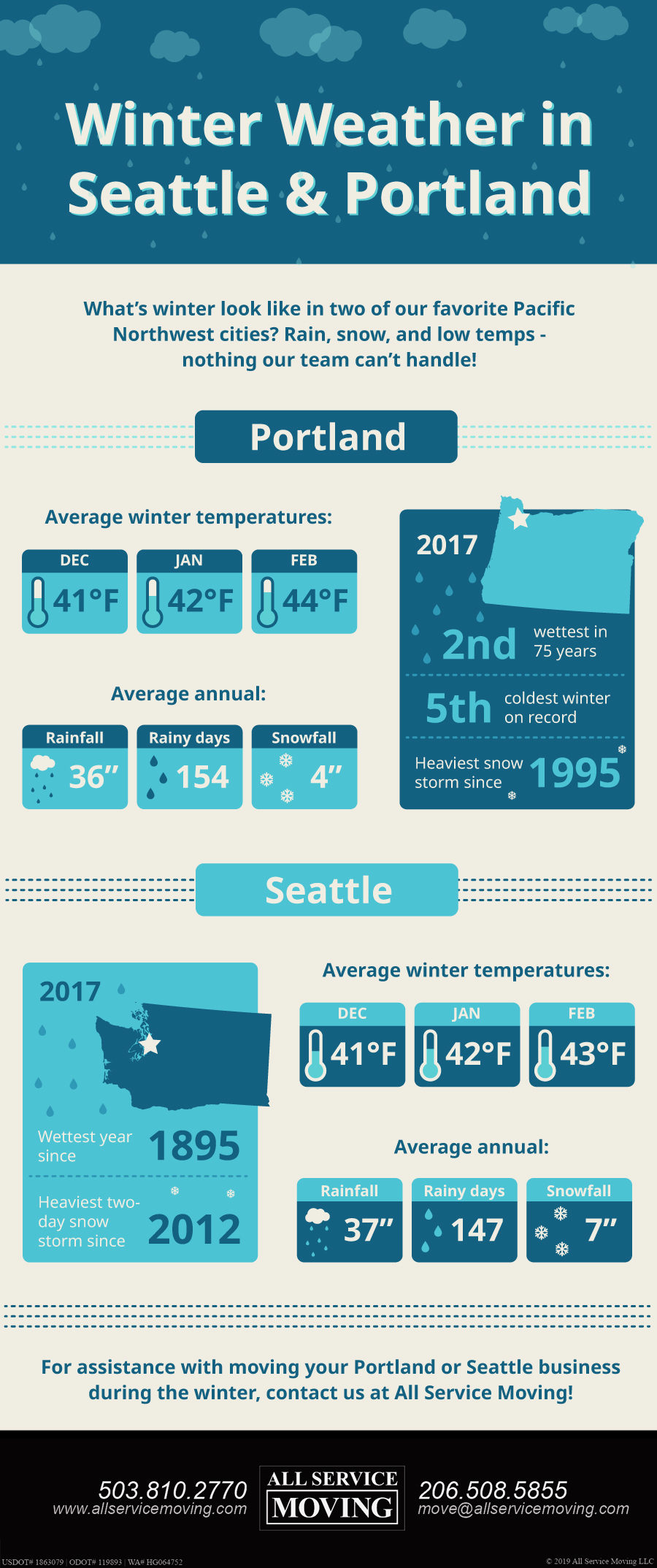
If you’re a business owner in the Pacific Northwest, you’re probably accustomed to lots of rain and limited daylight for a good portion of the year. However, moving your Portland or Seattle company during the winter may be an entirely new ordeal. These cities aren’t as prepared for snow and ice as cities used to more and predictable inclement weather. In fact, in 2017 the city of Seattle loaned Portland 11 snow plows to help clear the roads.
So how should you go about an office move in the winter?
Use these 10 best practices for winter business moves
1. Weigh Your Options
For local office relocations in Portland or Seattle, many business owners might think they can get the job done without professional help. While this could be a possibility for smaller companies with just a few employees, it’s best to hire pros for the actual move. Of course, some corporate moving tasks can be completed internally, such as planning, organizing, and contacting vendors. However, packing your office can be easily outsourced to a moving company. If left to employees, it could inhibit productivity. Weigh your options before diving into a DIY business move.
2. Develop a Strategy
It’s always crucial to plan ahead and develop a relocation strategy, especially during the winter. Inform employees, vendors, utility companies, and professional movers of the transition as soon as possible so you can get a head start with planning. Add each stage of the move to a calendar including organizing, packing, mapping the layout of your next office, physically moving, and any potential downtime. Furthermore, you should anticipate unpredicted hiccups along the way. Winter weather only adds to the number of variables that can go wrong with an office move, and developing a strategy will help you prepare for all possible scenarios.
3. Get Organized
Staying organized throughout the moving process will prevent last-minute hiccups and limit time spent dealing with the outdoor elements. Recruit a small team of employees to help manage the move and allot plenty of time for organizing and packing up your current office. Be sure to be clear about who’s in charge of what tasks and which outside companies need to be contacted. If you’re organized, you can avoid unnecessary trips to and from your new office..
4. Consider Heating Both Locations on Moving Day
On the day you move, consider heating both your old and new commercial spaces. You’ll have to pay extra electric costs for one day, but keeping your movers and employees comfortable may be worth the expense. Also, IT equipment and other electronics are sensitive to cold temperatures, so it’s best not to risk it.
5. Monitor the Weather for Moving Day
Keep an eye on the weather forecast for your moving day. If it looks like you may be dealing with heavier rain than usual, or potential snow or ice, it might be a good idea to reschedule. Moving in extreme weather can lead to injuries and damage to your valuable office equipment.
6. Start Early
During Pacific Northwest winters, daylight becomes scarce leaving only about eight hours during the day to relocate your office. Start moving in the morning so that you have plenty of time to get everything transferred to the new space before dark. With that said, keep in mind that roads and walkways can freeze overnight, so it may be a good idea to move an hour or two after the sun comes up to allow for some thawing.
7. Weather-Proof Walkways
If you anticipate snow, ice, or hail on moving day, be sure to weatherproof any walkways or stairs that will be used to carry items in and out of each building. You may need to salt icy pathways or shovel snow to prevent employee injury and damage to equipment.
8. Pamper Your Employees
Keep in mind that relocating your office might be stressful for your employees. It can take time to adjust to a new space and become productive again. Also, some employees may have a longer or altered commute. If possible, plan for a moving day that focuses more on settling into the new space and less on diving into work. Offer hot coffee, tea, and cocoa and order a catered breakfast or lunch.
9. Winterize Your New Space
Since there’s so much that goes into moving an office, some business owners may overlook winterizing the new space. If you’re renting or leasing a new space, make sure the owners have cleared all parking lots and walkways of snow and ice. If you’ve purchased your commercial space, consider hiring professionals to take care of these hazards.
10. Hire a Commercial Moving Company in Portland or Seattle
As the go-to moving company in Portland and Seattle, All Service Moving can assist with office relocation, packing and unpacking, disassembly and assembly of furniture, storage assistance, and more! Leave the bulk of your move to our experienced moving teams. Contact us today to get started with your office move in Portland or Seattle.

